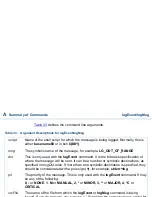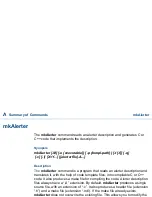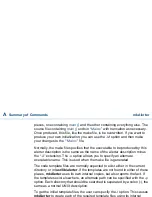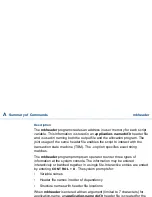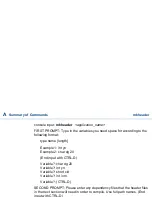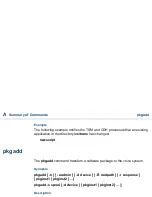
A
Summary of Commands
mkheader
UCS 1000 R4.2 Administration 585-313-507
Issue 3 April 2000 534
Description
The mkheader program creates an address in user memory for each script
variable. This information is stored in an application-name def.h header file
and is used in naming both the output file and the allocation program. The
joint usage of the same header file enables the script to interact with the
transaction state machine (TSM). The
-e
option specifies exact string
matches.
The mkheader
program prompts an operator to enter three types of
information at the system console. The information may be entered
interactively or batched together in a single file. Interactive entries are ended
by entering
C O N T R O L + D
. The system prompts for:
•
Variable names
•
Header file names in order of dependency
•
Structure names with header file locations
When mkheader
is entered with an argument (limited to 7 characters) for
application-name, an application-name def.h
header file is created for the
output information. The mkheader
program then prompts for three types of
information which it uses in producing the output file.
•
It prompts the operator for the name of one of the variables char, int, or
short. Char is the only variable that requires a length (default = 1).
It then allocates space for the variables at the beginning of the allowable
user memory and places this information in the newly created header file.





